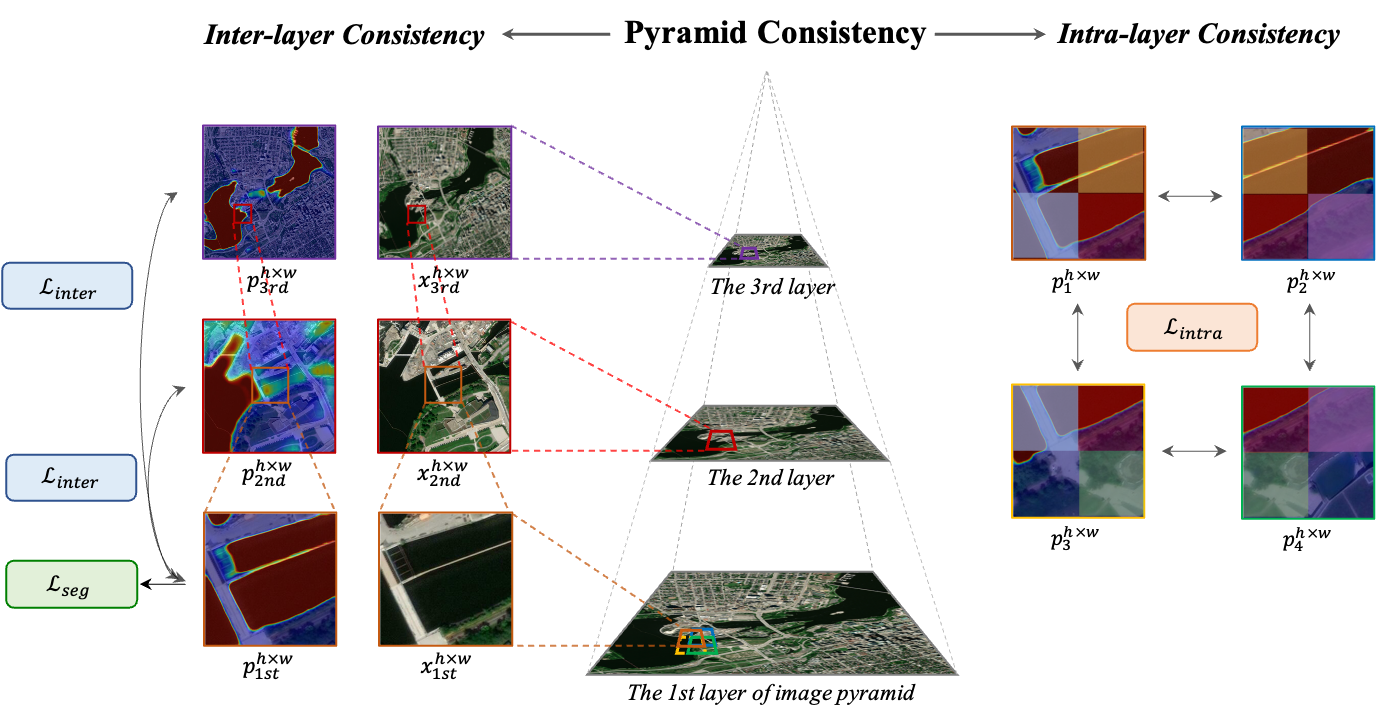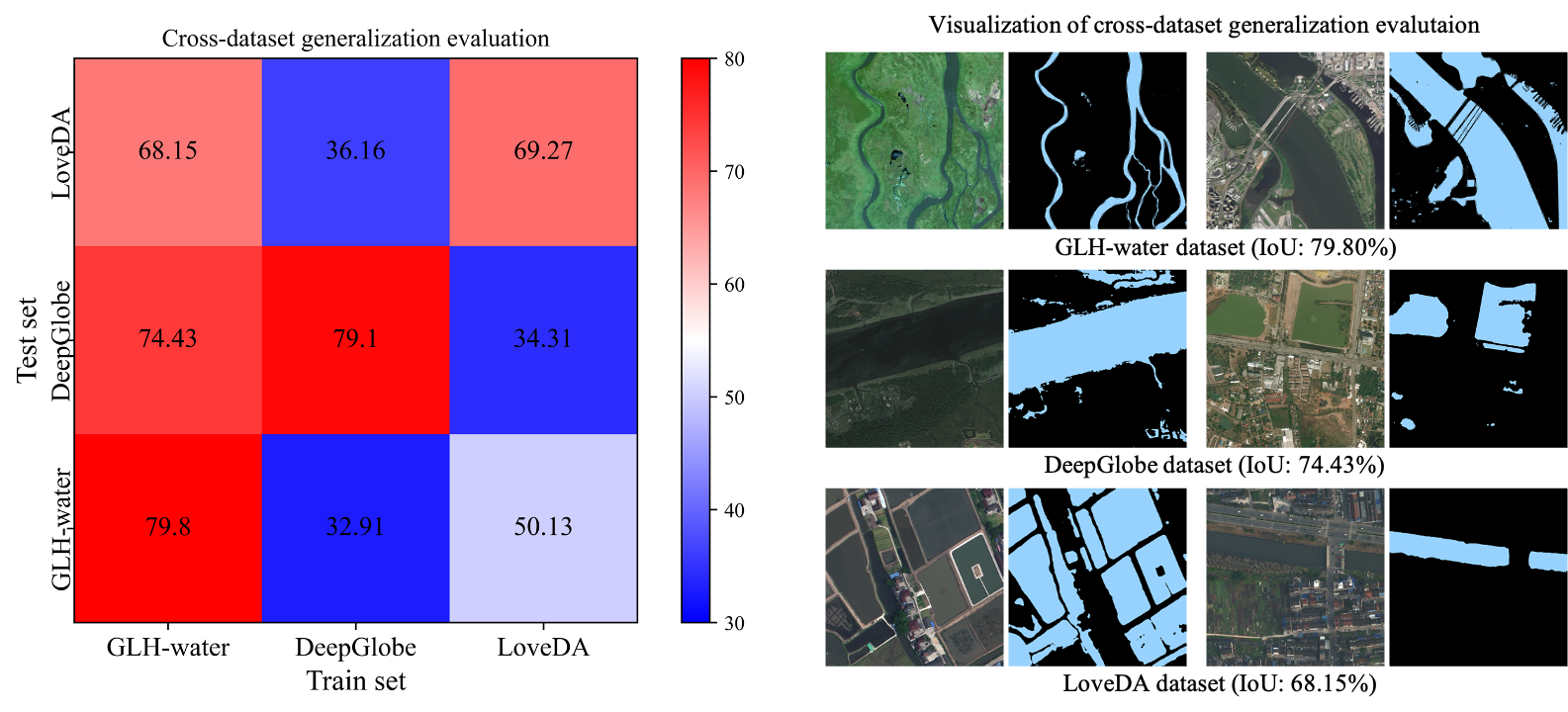
Yansheng Li, Bo Dang, Wanchun Li, Yongjun Zhang

Introduction | GLH-water Dataset | Benchmark | Generalization experiments | Citation | Contact
Global surface water detection in very-high-resolution (VHR) satellite imagery can directly serve major applications such as refined flood mapping and water resource assessment. Although achievements have been made in detecting surface water in small-size satellite images corresponding to local geographic scales, datasets and methods suitable for mapping and analyzing global surface water have yet to be explored. To encourage the development of this task and facilitate the implementation of relevant applications, we propose the GLH-water dataset that consists of 250 satellite images and 40.96 billion pixels labeled surface water annotations that are distributed globally and contain water bodies exhibiting a wide variety of types (e.g., rivers, lakes, and ponds in forests, irrigated fields, bare areas, and urban areas). Each image is of the size 12,800 x 12,800 pixels at 0.3 meter spatial resolution. To build a benchmark for GLH-water, we perform extensive experiments employing representative surface water detection models, popular semantic segmentation models, and ultra-high resolution segmentation models. Furthermore, we also design a strong baseline with the novel pyramid consistency loss (PCL) to initially explore this challenge, increasing IoU by 2.4% over the next best baseline. Finally, we implement cross-dataset generalization and pilot area application experiments, and the superior performance illustrates the strong generalization and practical application value of GLH-water dataset.
To fill the lack of pertinent datasets and enhance the generalizability of segmentation models in detecting global surface water, we first present the GLH-water dataset that contains 250 VHR (GSD=0.3m) satellite images with the size of 12,800 × 12,800 pixels. These images are collected from various locations worldwide and manual annotations are included.
GLH-water dataset has five remarkable and important advantages:


Many models are developed to consider the characteristics of water bodies in VHR satellite images in the field of remote sensing. We choose three representative models as baseline models. In the realm of computer vision, numerous sophisticated semantic segmentation models are perpetually created, which can easily be adapted for satellite images. We use five advanced models to construct the benchmark results. In addition, given the VHR and the large size of images in GLH-water, we also evaluate the state-of-the-art semantic segmentation algorithms specifically designed for ultra-high resolution images.
We develop a competitive strong baseline with the new pyramid consistency loss (PCL) that is specifically designed to explore the detection performance of surface water bodies in large-size VHR satellite images. The pyramid consistency encompasses the intra-layer consistency (i.e., visual field consistency between pyramidal layers) and the inter-layer consistency (i.e., spatial consistency within a pyramidal layer).




@inproceedings{li2024glh,
title={Glh-water: A large-scale dataset for global surface water detection in large-size very-high-resolution satellite imagery},
author={Li, Yansheng and Dang, Bo and Li, Wanchun and Zhang, Yongjun},
booktitle={Proceedings of the AAAI Conference on Artificial Intelligence},
volume={38},
number={20},
pages={22213--22221},
year={2024}
}
If you have any problems or feedback with the project, please contact: bodang@whu.edu.cn